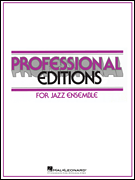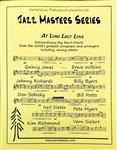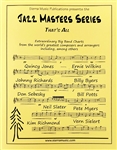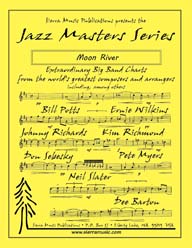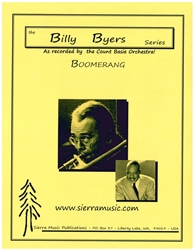LADY IS A TRAMP, THE
Performed by Frank Sinatra
Arranged by Billy Byers, Prepared for Publication by Dylan Canterbury, Rob DuBoff, and Jeffrey Sultanof
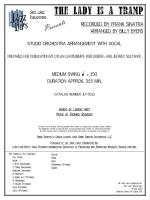
Cat #: JLP-9513
$65.00This item usually ships within 1 business day.
Questions?
Please call +1-518-587-1102 or email us.
Edition: Jazz Studio Orchestra Arrangement with Vocal
Description: Swing - Difficult
Publisher: Jazz Lines Publications
Billy Byers' arrangement of The Lady Is a Tramp became a staple of Frank Sinatra's live performances, and it's not hard to see why. The chart does a masterful job of packing in a surprising amount of content for the band while managing to never step over the vocal melody at any time.
A bright and brassy four bar introduction sets the tone for Sinatra's entrance. The arrangement doesn't ever feature a shout chorus, but rather lets the vocals handle two repetitions of the melody, possibly due to the song's unusually long form. The first time through, the rhythm section tips along in a steady two-beat feel, while the horn figures are generally fairly simple and riff-based. The urgency picks up slightly at measure 37 when the rhythm section briefly shifts to a walking feel, but returns to the two-beat for the final A section.
During this final A, the ensemble tension starts to build until eventually hitting an early climax for the second chorus at measure 53, which sees the key bump up a half step. This second chorus sees the complexity in the backgrounds ramp up quite a bit, as the horn figures begin to more actively engage Sinatra's vocals. After some recycled backgrounds for the bridge, the grand finale commences at measure 93, with Sinatra tagging the melody's final phrase as the band continues to dig in harder. A descending sax figure over a surprise minor chord sets up the conclusion - a single hard unison hit across the band.
For performance purposes, there are a couple of things your ensemble could do that Sinatra himself did on a regular basis. First, this arrangement can be turned into a "walk-up" by vamping the first four measures until your vocalist is ready. Second, once your ensemble finishes their initial read-through, you may choose to start at the vocal pickups into measure 85 as a reprise. Both of these options were indicated in the original set of parts by penciled-in markings, and can ultimately be considered optional. In addition, Byers included parts for 2 horns in F, strings, and vibraphone to make this chart adaptable in a variety of configurations. These parts are optional; however, the horns in F are cued in trumpets 3 and 4.
This publication was based on the original set of parts from Frank Sinatra's library - this is not a transcription.
Vocal
2 Alto Saxophones
2 Tenor Saxophones
Baritone Saxophone
4 Trumpets
2 Horns in F (Optional)
4 Trombones
2 Violins (Optional)
Viola (Optional)
Cello (Optional)
Guitar
Piano
Bass
Vibraphone (Optional)
Drums
Trumpet 1: D6
Trombone 1: C5





